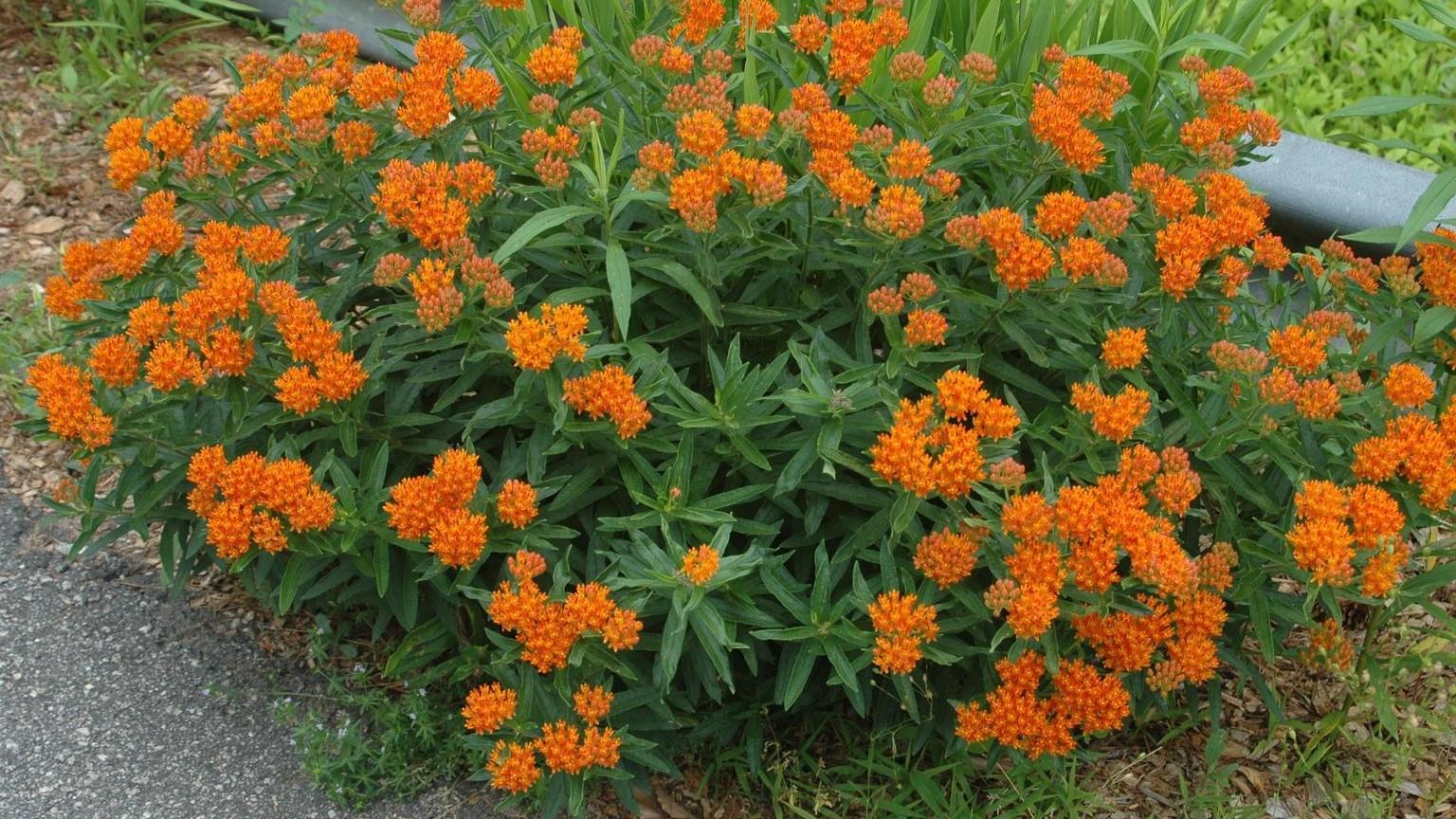About butterfly milkweed
Asclepias tuberosa
Perennial Forb
Dogbane Family
Maryland Distribution: Poor, coarse soils of dry fields, rock outcrops, and other steep slopes throughout the state.
Height: Up to 3 feet
Blooms: orange, June to September
Sun: Part sun to full sun
Soil: Well-drained, poor, dry, usually rocky or sandy soil
Garden Use & Maintenance: A stunningly showy wildflower with a long bloom period. Excellent cut flower. Requires no maintenance, but insists upon well-drained, dry, coarse soils or will succumb to diseases. A tendency to completely disappear in winter can leave the gardener unclear about its location. Like other milkweeds, it is susceptible to attack by the invasive alien oleander aphids. Your maintenance options include waiting for beneficial insects or (carefully!) spraying with horticultural oil. Use for garden beds, xeriscaping, roadsides, dry meadows, rock gardens, pollinator gardens and monarch waystations. Performs particularly well on steep road cuts and at the top of south-facing stone walls.
Garden Companions: Little Bluestem, Whorled Coreopsis
Wildlife/Pollinator Notes: One of the best nectar plants for a wide variety of pollinators. Host plant for the Monarch butterfly. If you plan to use it in that capacity, plant a dozen or more specimens, or add additional milkweed species to your garden.
Deer proof
